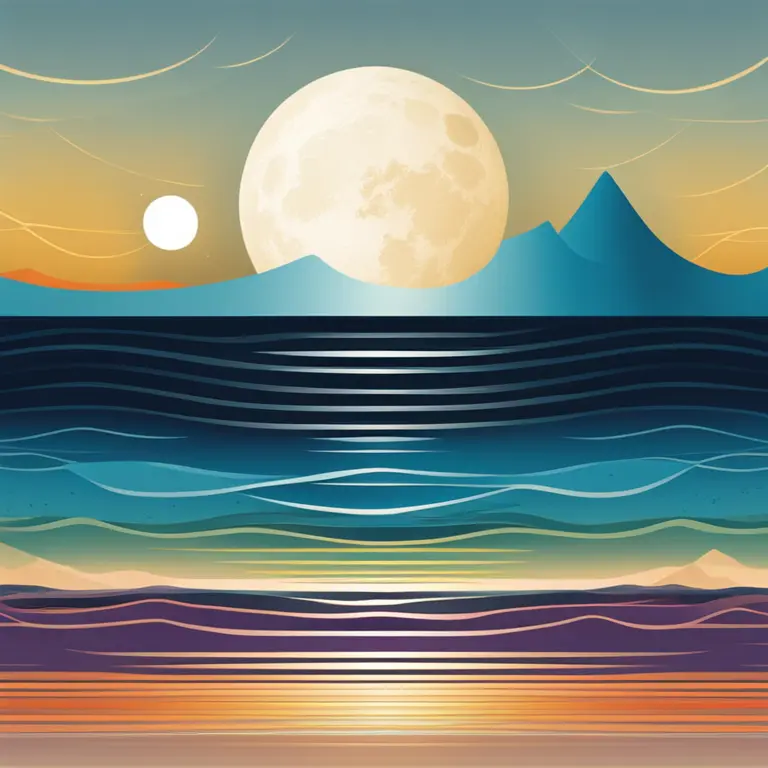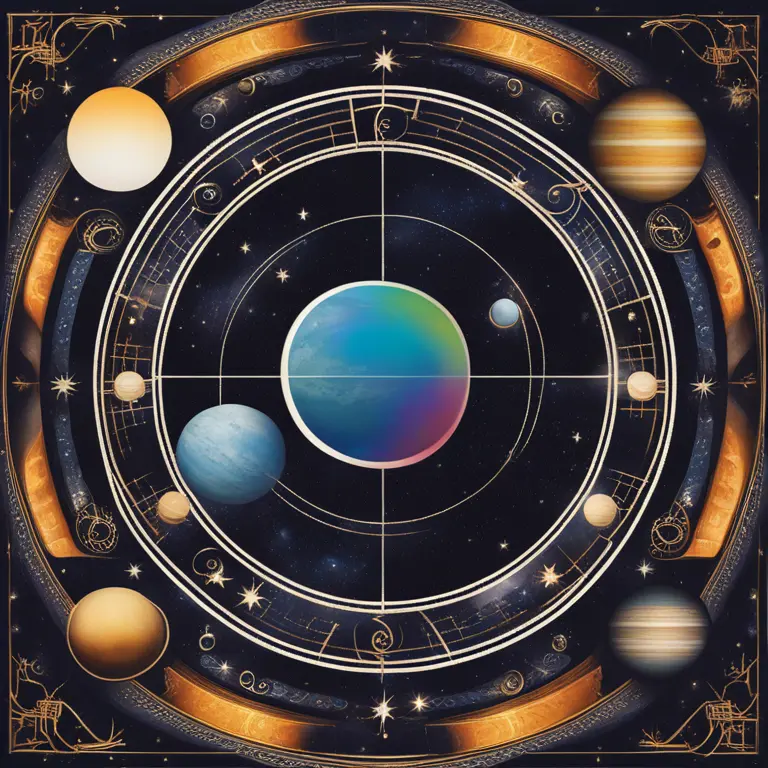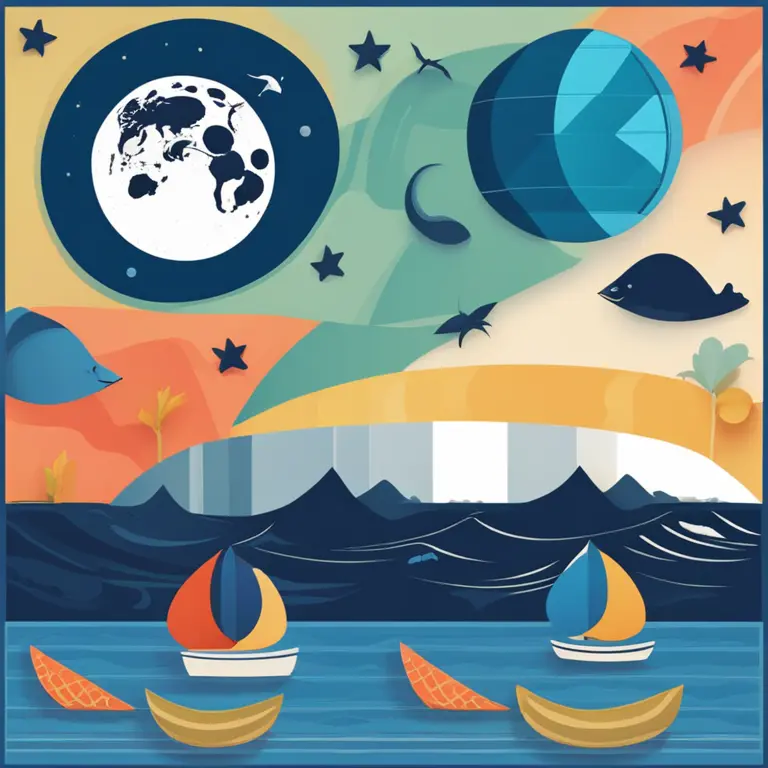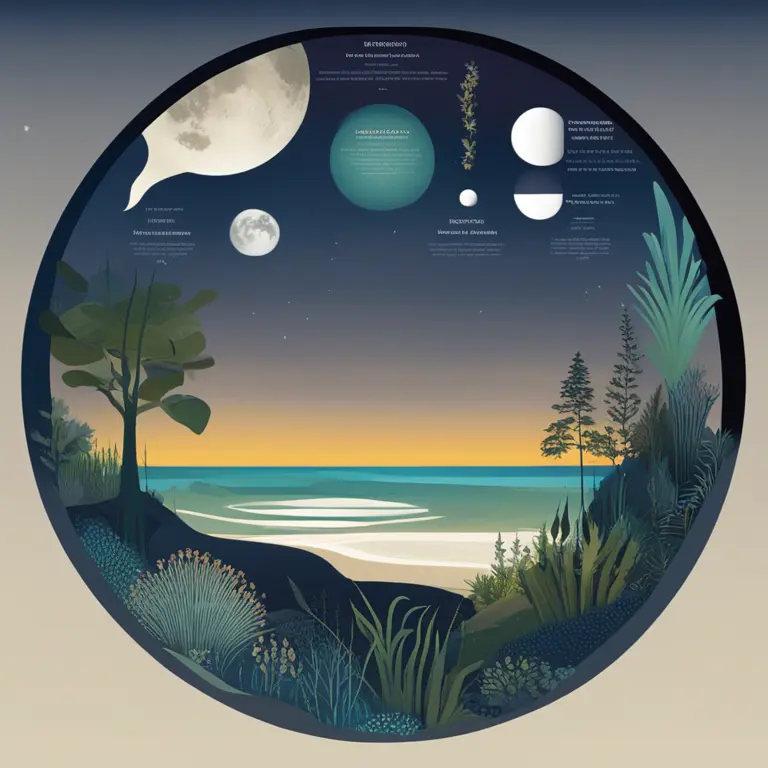
Moon Phases and Their Impact on Ocean Tides
Discover how the moon's changing phases sway the rhythmic dance of the ocean's tides, influencing ecosystems and human activities.
article by Priya Deshmukh
The Luminous Guide: How Moon Affects Tides
The moon, Earth's nearest celestial neighbor, has fascinated humans for millennia, not just for its mystic beauty but for its profound influence on our planet. As it orbits Earth, the moon exerts gravitational pull on our oceans, leading to the natural phenomenon we know as tides. High tides occur when the moon's gravitational force pulls ocean water toward it, while low tides happen as the pull lessens. This gravitational dance is decidedly more complex, depending on the moon's various phases throughout the month, which are determined by its position relative to Earth and the sun.

Phases of the Moon: A Tidal Choreography
Each phase of the moon—from new moon to full moon—plays a role in the amplitude and timing of tides. During the new moon and full moon, when the sun, Earth, and moon align, the gravitational forces combine to produce "spring tides," characterized by higher high tides and lower low tides. Conversely, when the moon is at its first or last quarter phase, the sun and moon are at right angles to Earth, leading to "neap tides," which are marked by smaller differences between high and low tides. This ebb and flow create a rhythmic pattern that coastal communities and marine species rely upon.

Tides and Ecological Balance
The moon's sway over the tides goes beyond mere water movement; it is a vital aspect of coastal ecosystems. The intertidal zone, lying between the high and low tide marks, is home to diverse life forms that have adapted to the changing environment. The fluctuating water levels govern feeding and breeding patterns for many aquatic and terrestrial species, illustrating the moon's indirect but critical influence on biodiversity and ecological stability. Preserving these habitats is essential, as they serve as front-line defenses against storms and floods, and provide resources for humans, including seafood and recreation.

Lunar Cycles and Astrological Influence
Astrology asserts that lunar cycles hold sway not only over the waters of Earth but also on human emotions and destinies. In the context of horoscopes and human compatibility, the moon's phases can be interpreted as times of shifting energies and potential. As we look to the future, the moon's cycles in 2024 and beyond will continue to be observed for their possible astrological indications. Astrologists believe that understanding these cycles provides insight into personal growth, emotional well-being, and interpersonal dynamics, offering guidance in a cosmically connected universe.

Technological and Nautical Considerations
Human activities, particularly those related to maritime navigation and coastal developments, are intricately tied to tidal movements. Predicting tides is paramount for safe shipping, fishing, and recreational boating. With advancements in technology, tide predictions have become more accurate, allowing for better planning and reduced risks at sea. Coastal engineering projects, too, must account for tidal fluctuations to ensure the longevity and safety of harbors, sea walls, and other maritime structures, a testament to the moon's tangible impact on human ingenuity.
Embracing Tidal Power: A Sustainable Future
Amidst rising concerns over climate change and the need for renewable energy sources, the predictable nature of tides, thanks to the moon, offers an attractive option for sustainable power generation. Tidal energy systems harness the kinetic movement of tides to produce electricity, providing a clean and reliable alternative to fossil fuels. Continued investment in tidal energy has the potential to reinforce our commitment to a sustainable future, one where we work in harmony with the natural rhythms of celestial bodies, like the moon, that have shepherded Earth's organisms for aeons.
Published: 1/19/2024
Modified: 1/19/2024
More predictions
Come back here soon to learn more about yourself and your future


How Moon Phase Influences on Relationships?
Discover how the lunar cycle can impact your connection with your boyfriend and what each phase may hold for your love life.


Moon Phases and Menstrual Cycles: Celestial Rhythms
Discover the fascinating connection between the lunar cycle and women's menstrual cycles, and how moon phases may influence physical and emotional health.


The Nighttime Moon Phase: When It’s Visible to Observers
Learn which moon phase graces the night sky and discover its unique characteristics and impact on astrology and personal biorhythms.